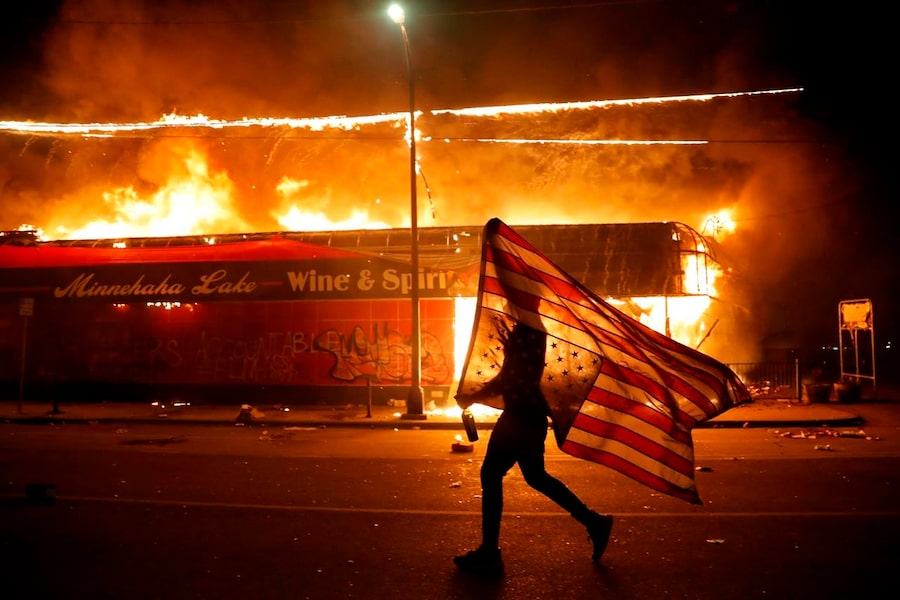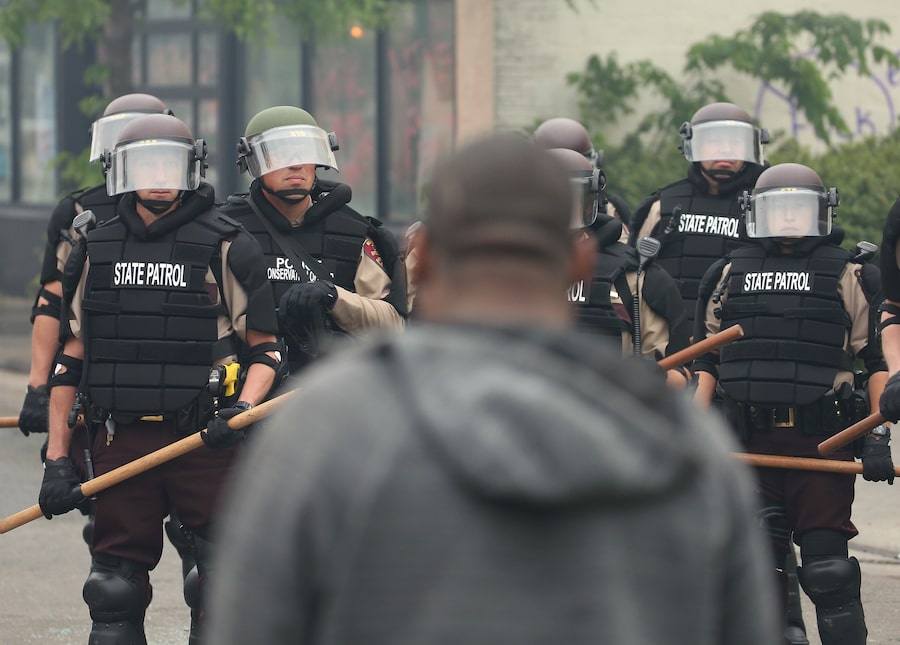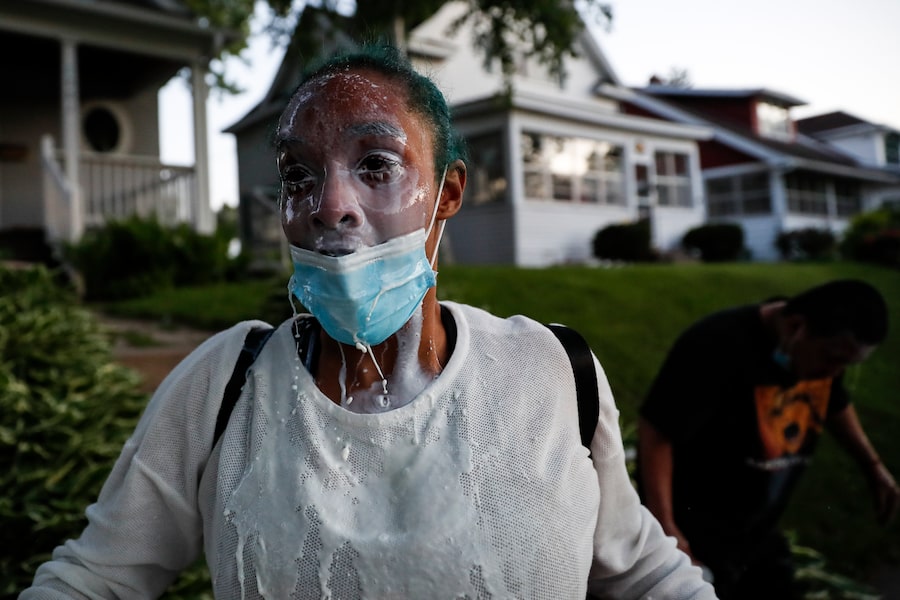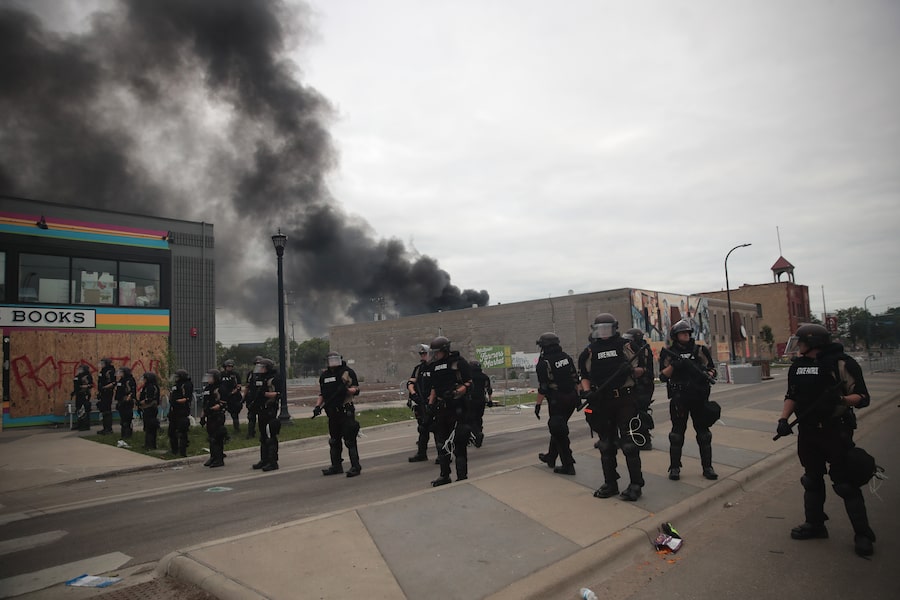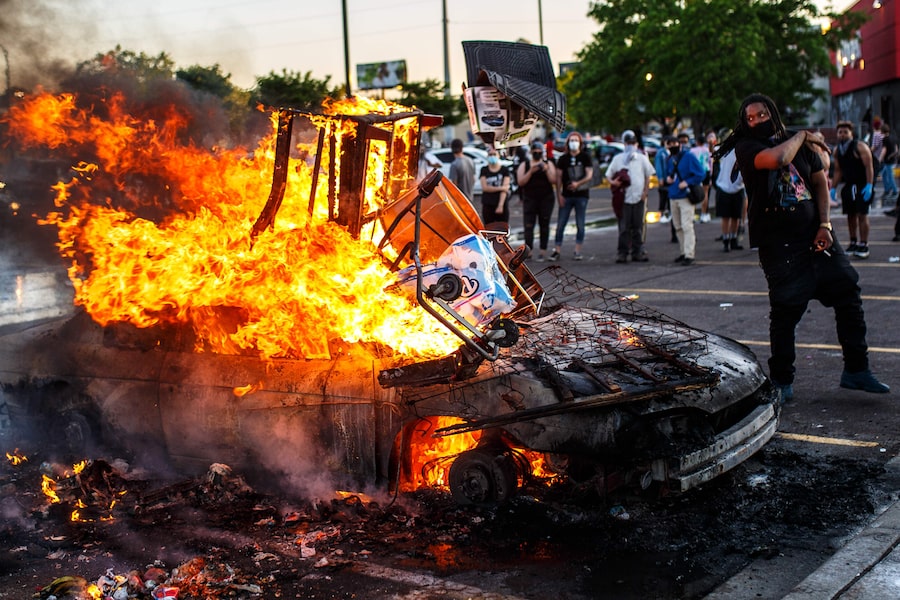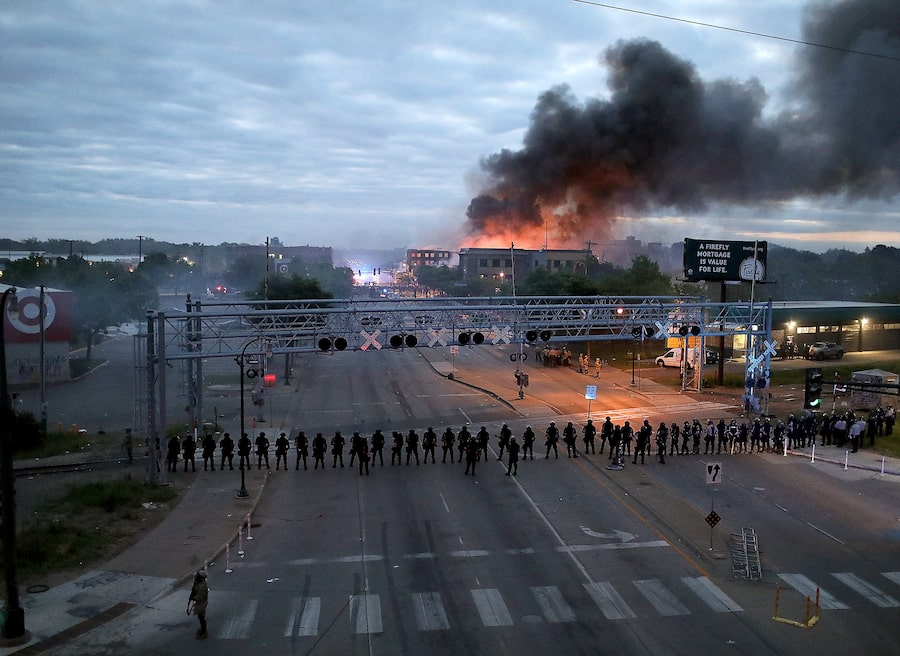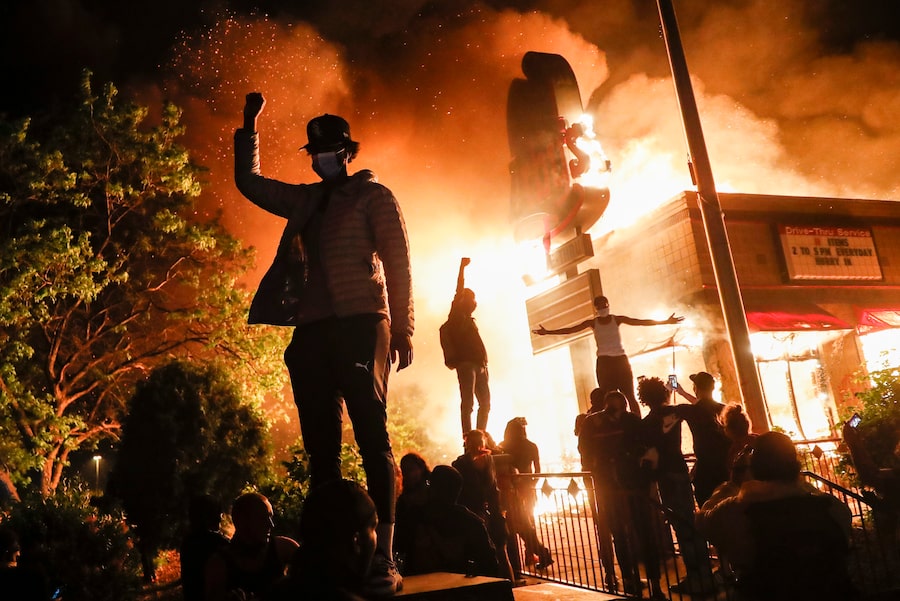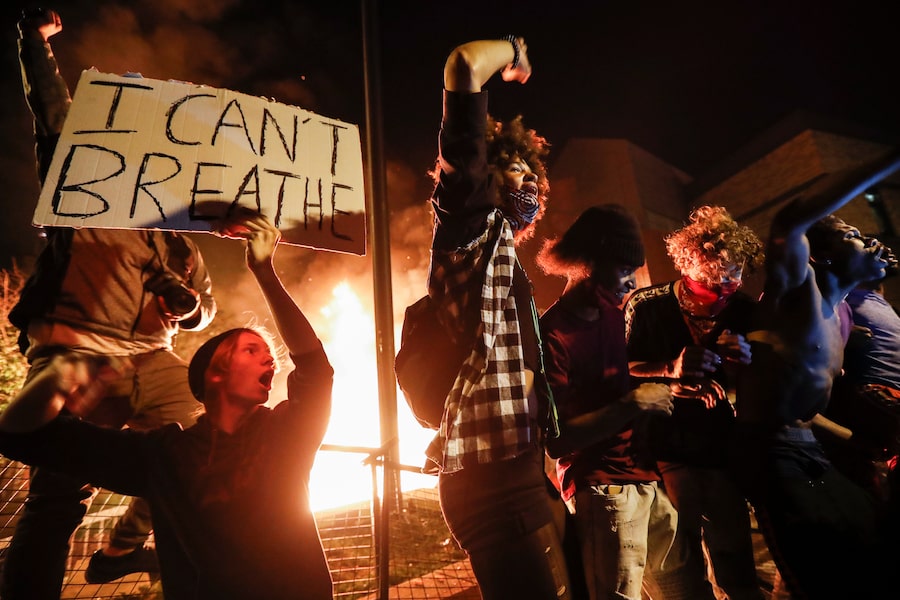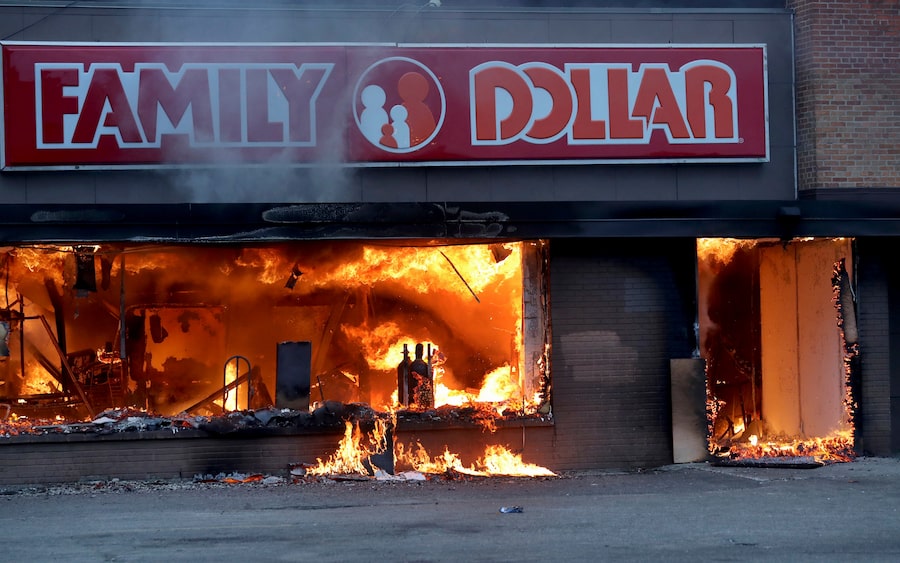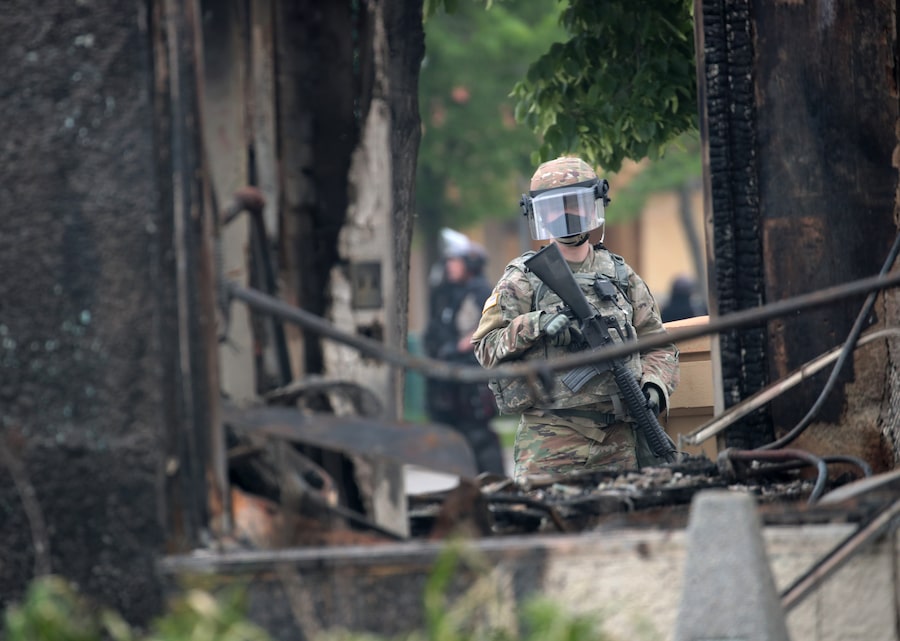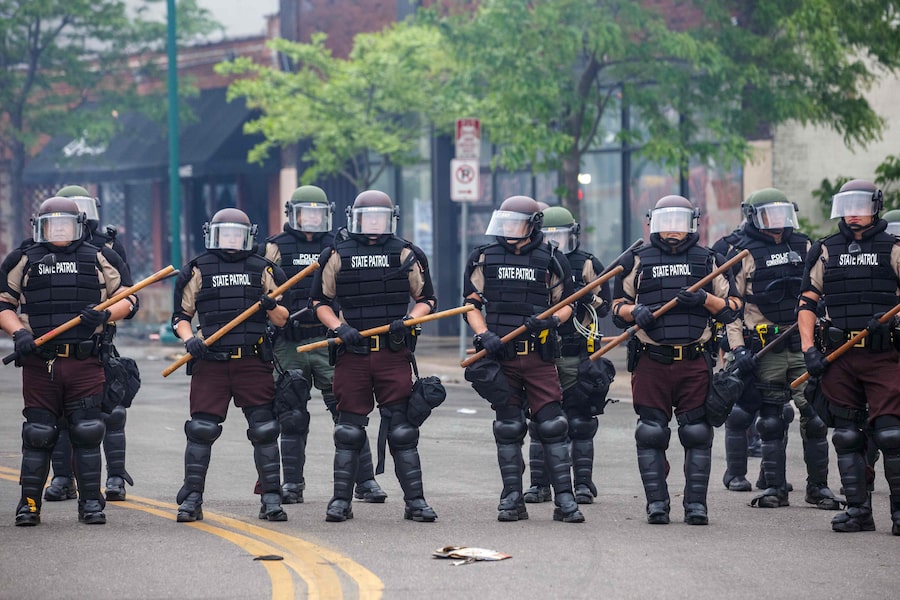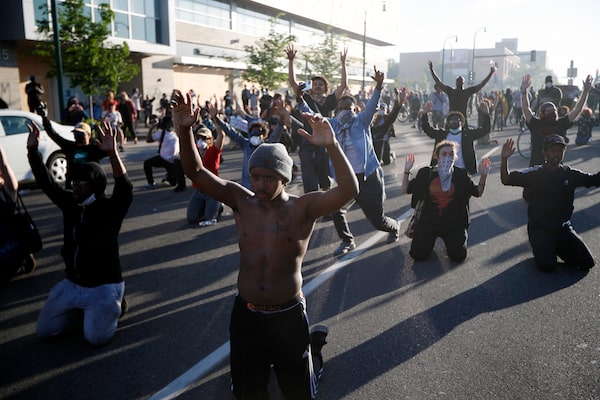
Demonstrators gather in the street with their hands raised Friday, May 29, 2020, in Minneapolis.John Minchillo/The Associated Press
The white Minneapolis police officer who pressed his knee into George Floyd’s neck as he begged for air was arrested Friday and charged with murder, as authorities imposed overnight curfews to try to stem violent protests over police killings of African Americans that have spread from Minneapolis to cities across the country.
Protesters smashed windows at CNN headquarters in Atlanta, torched a police car and struck officers with bottles. Large demonstrations in New York, Houston, Washington, D.C., and other cities ranged from people peacefully blocking roads to clashing with police.
In Minneapolis, thousands of protesters marched through downtown as an 8 p.m. curfew ticked past and encircled a police precinct station. “Prosecute the police!” some chanted, and “Say his name: George Floyd!” There was no violence, but some protesters sprayed graffiti on buildings. Elsewhere in the city, officers fired tear gas and rubber bullets to drive back crowds of protesters.
It wasn’t clear if — or how — authorities would enforce the curfew amid sharp questions about how city and state leaders have handled the crisis. The curfew came a night after protesters burned a police precinct station.
Protests roiled the country the same day Officer Derek Chauvin, 44, was charged with third-degree murder and second-degree manslaughter. He also was accused of ignoring another officer who expressed concerns about Floyd as he lay handcuffed on the ground, pleading that he could not breathe as Chauvin pressed his knee into his neck for several minutes. Floyd, who was black, had been arrested on suspicion of using a counterfeit bill at a store.
Chauvin, who was fired along with three other officers who were at the scene, faces more than 12 years in prison if convicted of murder.
An attorney for Floyd’s family welcomed the arrest but said he expected a more serious murder charge and wants the other officers arrested, too.
Prosecutor Mike Freeman said more charges were possible, but authorities “felt it appropriate to focus on the most dangerous perpetrator.”
Minneapolis Mayor Jacob Frey’s curfew also will be in place Saturday, and nearby cities announced similar restrictions.
“I know that whatever hope you feel today is tempered with skepticism and a righteous outrage,” Frey said in a statement. “Today’s decision from the County Attorney is an essential first step on a longer road toward justice and healing our city.”
Protests nationwide are fueled by outrage over Floyd’s death and years of police violence against African Americans. Demonstrators clashed with officers in New York and blocked traffic in Houston and San Jose, California. In Atlanta, demonstrators smashed police cars, broke into a restaurant and spray-painted the logo sign at CNN’s headquarters, where hundreds confronted police.
“You are disgracing our city,” Mayor Keisha Lance Bottoms told protesters. “You are disgracing the life of George Floyd and every other person who has been killed in this country.”
Police were trying to put Floyd in a squad car Monday when he stiffened and fell to the ground, saying he was claustrophobic, a criminal complaint said. Chauvin and Officer Tou Thoa arrived and tried several times to get the struggling Floyd into the car.
Chauvin pulled Floyd out of the passenger side, and the handcuffed Floyd went to the ground face down. Officer J.K. Kueng held Floyd’s back and Officer Thomas Lane held his legs while Chauvin put his knee on Floyd’s head and neck area, the complaint said.
When Lane asked if Floyd should be rolled onto his side, Chauvin said, “No, staying put is where we got him.” Lane said he was “worried about excited delirium or whatever.”
An autopsy said the combined effects of being restrained, potential intoxicants in Floyd’s system and his underlying health issues, including heart disease, likely contributed to his death. It revealed nothing to support strangulation as the cause of death.
There were no other details about intoxicants, and toxicology results can take weeks. In the 911 call that drew police, the caller describes the man suspected of paying with counterfeit money as “awfully drunk and he’s not in control of himself.”
After Floyd apparently stopped breathing, Lane again said he wanted to roll Floyd onto his side. Kueng checked for a pulse and said he could not find one, according to the complaint.
Chauvin had his knee on Floyd’s neck for 8 minutes, 46 seconds, including nearly three minutes after Floyd stopped moving and talking, the complaint said.
Chauvin’s attorney had no comment when reached by The Associated Press.
The prosecutor highlighted the “extraordinary speed” in charging the case four days after Floyd’s death and defended himself against questions about why it did not happen sooner. Freeman said his office needed time to gather evidence, including what he called the “horrible” video recorded by a bystander.
Minnesota police arrest CNN reporter and camera crew as they report from protests in Minneapolis https://t.co/oZdqBti776 pic.twitter.com/3QbeTjD5ed
— CNN (@CNN) May 29, 2020
News of the arrest came moments after Minnesota Gov. Tim Walz acknowledged the “abject failure” in responding to this week’s protests and called for swift justice for the officers. Walz said the state took the lead after the abandoned police station burned.
“Minneapolis and St. Paul are on fire. The fire is still smouldering in our streets. The ashes are symbolic of decades and generations of pain, of anguish unheard,” Walz said. “Now generations of pain is manifesting itself in front of the world — and the world is watching.”
News of the arrest came moments after Minnesota Gov. Tim Walz acknowledged the “abject failure” in responding to this week’s protests and called for swift justice for the officers. Walz said the state took the lead after the abandoned police station burned.
“Minneapolis and St. Paul are on fire. The fire is still smouldering in our streets. The ashes are symbolic of decades and generations of pain, of anguish unheard,” Walz said. “Now generations of pain is manifesting itself in front of the world — and the world is watching.”
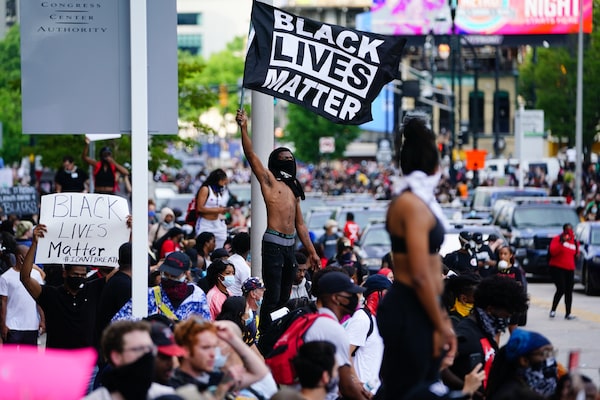
A man waves a Black Lives Matter flag during a protest on May 29, 2020 in Atlanta, Georgia.Elijah Nouvelage/Getty Images
President Donald Trump threatened action, tweeting “when the looting starts, the shooting starts,” which prompted a warning from Twitter for “glorifying violence.” Trump later said he was referring to shooting that had happened during the protests.
Later, the president said he’d spoken to Floyd’s family and “expressed my sorrow.”
Trump called video of the arrest “just a horrible thing to witness and to watch. It certainly looked like there was no excuse for it.”
Canadian Prime Minister Justin Trudeau did something he rarely does: comment publicly on another country’s domestic affairs.
“Anti-black racism, racism, is real; it’s in the United States, but it’s also in Canada,” Trudeau said Friday as he wrapped up his daily briefing outside his home at Rideau Cottage in Ottawa.
More than once he used the term “anti-black racism,” a specific phrase that black communities have long advocated for in order to distinguish the express injustices black people face in Canada and around the world from other forms of discrimination.
“We need as a society to stand together, to stand up against discrimination, to be there for each other in respect, but also understand that we have work to do as well in Canada in our systems that we need to work forward on,” Trudeau said.
“I call on all Canadians — whether it’s anti-black racism or anti-Asian racism or racism discrimination of any type, to stand together in solidarity, to be there for each other and know just how deeply people are being affected by what we see on the news these past few days.”
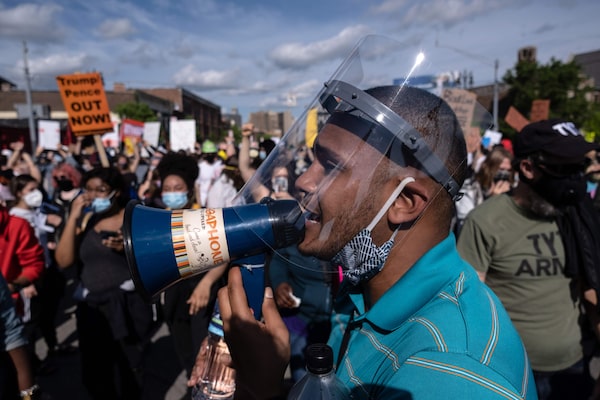
A man wearing a face shield speaks into a megaphone as protesters take to the streets in Detroit, Michigan, on May 29,2020 over the death of George Floyd.SETH HERALD/AFP/Getty Images
Attorney Benjamin Crump, who is representing Floyd’s family, asked to take custody of Floyd’s body for an independent autopsy.
The doctor who will do the autopsy is Michael Baden, former chief medical examiner of New York City, who was hired to do an autopsy for Eric Garner, a black man who died in 2014 after New York police placed him in a chokehold and he pleaded that he could not breathe.
State and federal authorities also are investigating Floyd’s death.
The owner of a popular Latin nightclub said Floyd and Chauvin both worked as security guards there as recently as last year, but it’s not clear whether they worked together. Chauvin served as an off-duty security guard at the El Nuevo Rodeo club for nearly two decades, and Floyd had worked there more recently for about a dozen events featuring African American music, Maya Santamaria told the AP.
Santamaria, who recently sold the venue, said Chauvin got along well with the regular Latino customers but did not like to work the African American nights. When he did, and there was a fight, he would spray people with mace and call for police backup and half-dozen squad cars would soon show up, something she felt was “overkill.”
With a report from The Canadian Press
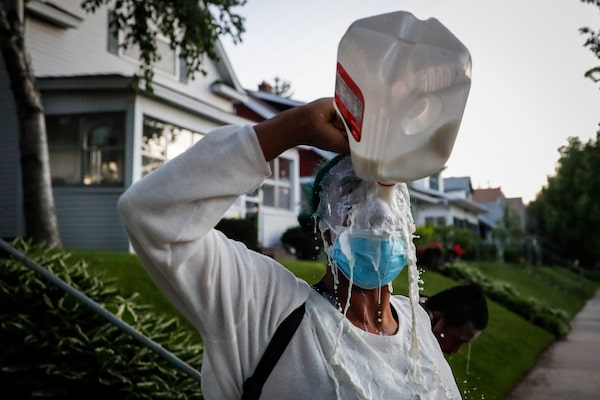
A protestor douses her face with milk after being exposed to tear gas fired by police, Thursday, May 28, 2020, in St. Paul, Minn.John Minchillo/The Associated Press
Our Morning Update and Evening Update newsletters are written by Globe editors, giving you a concise summary of the day’s most important headlines. Sign up today.
